The Research Institute for Inland Fisheries (IFRI), of Bogor, Indonesia, requested the assistance of FAO/UNDP Aquaculture Development and Coordination Programme through the FAO Regional Office for Asia and the Far East for provision of a socio-economic consultant to: (i) study the existing practice of integrated farming of fish, livestock and crops in West Java; (ii) train junior scientists of the Institute in survey methodology and, (iii) evaluate the potential for future development.
In compliance with the request, the author visited West Java in February/March 1979.
Upon arrival, initial discussions were held with Mr. Roestami Djajadiredja, Director, and the staff of IFRI. Two counterparts, Messrs. Zulkifli Jangkaru and Mochamad Junus, were assigned to assist in the study and to be given on-the-job training. After evaluating existing background material, the study team visited 23 farms in five regions of West Java for a period of three weeks in order to collect data. Results of a preliminary analysis of the data were discussed with IFRI staff during the remaining week. The author also held two seminars on the methodology and purpose of socio-economic surveys in the context of aquaculture development during this time. Before departing, a final meeting was held with Mr. S.W. Sadikin, Head of the Agency for Agricultural Research and Development, to discuss preliminary results and possible follow-up of the study.
The author wishes to express his gratitude to Mr. Roestami Djajadiredja, Director, Research Institute for Inland Fisheries, Bogor, for his assistance and valuable advice. He is also indebted to Messrs Zulkifli Jangkaru and Mochamad Junus, the two counterparts assigned, for their assistance in the field work.
The socio-economic reality of rural West Java is determined by two central variables: scarcity of land and capital, and an abundant labour force. The two factors restrict farmgenerated incomes for the majority of the small farms (below 0.5 ha) and work opportunities for the increasing number of landless labourers. Scarcity of land and capital inputs call for the most productive utilization of available resources; and generation of employment for the existing and increasing work force.
The forms of integrated fish farming practised in West Java were found to have potential for the following socio-economic benefits:
more than one product is produced from the same plot of land;
existing resources (family labour, fertilizers, seed, by-products) are utilized to a fuller extent;
little capital is required (except in the case of chicken-cum-fish production); and
more work opportunities are created.
The types of combined production studied increased the overall output by yielding two products, generating more marketable surplus and increasing the family income. Combined production used relatively more inputs from internal sources (mainly family labour), reducing capital needs (as for inputs which otherwise had to be purchased in the market). The overall labour intensity rose, as the production of two products requires more labour inputs. By diversifying production, integrated farming also increased the continuity of family incomes.
By providing better incentives, the raising of fish through integrated production increases the supply of fish to local markets and reduces the gap between the present and the targeted per caput consumption of fish in West Java.
Altogether the cases evaluated in this study demonstrated how small farmers overcame prevailing resource limitations by combining fish farming with crop raising and poultry production, creating not only higher incomes for themselves but also providing more employment opportunities for the agricultural work-force.
During the first phase of the study the author evaluated the data on integrated fish culture which were available in the IFRI in Bogor; these data had been collected by staff members of the Institute during various field trips. Based on this and in consultation with the counterparts, seven types of integrated production were selected for field studies. The criterion used for their selection was whether there was evidence that integrated farming benefited the production of one or more of the commodities involved.
For each of the selected types of integrated production, 2–4 farms were visited. The selection of the specific cases was done with the aim of finding farms which were representative of the respective practice in West Java, taking into account farm size (up to 0.5 ha), socio-economic background of the operator, and family structure.
The case studies were made on the basis of structured interviews with individual farmers, to obtain information on the organization of combined production, expenditure and revenue, and socio-cultural aspects. With respect to expenditure and revenue, no records were available, therefore data had to be estimated from the information the farmers could supply. This certainly was a major constraint on the study, but the data were compared, cross-checked, and verified, wherever possible.
Information on inputs and outputs was collected separately for each of the commodities produced in integration, and separate cost-benefits were estimated. Overall cost benefits were then compiled. In order to arrive at yearly costs, initial inputs, as for the construction of ponds, duckhouses, etc., were depreciated linearly and added to operating expenses.
The sample size had to be limited due to shortage of time and manpower, and this obviously affects generalized conclusions. However, it is believed that the data and conclusions presented are clearly indicative of the socio-economic aspects of integrated fish culture as practised by small farmers in West Java at present.
Farmers in West Java have raised fish together with rice or vegetables for many generations. Some of them combine production of poultry with fish culture. The following types of farming operations which have earlier been described1 as integrated farming have not been included in this study for reasons indicated:
Combined farming of fish with sheep, horses or water buffalo:
The keeping of these types of livestock had no direct relationship to the raising of fish in the respective farm operations and/or these practices were not representative of agricultural production in West Java. Horses kept in stables over a fish pond were observed only in one case and the horse manure was regularly collected and marketed. The more widespread practice of raising sheep in the close vicinity of ponds was to facilitate washing the animals (mainly used for sport: ram fighting) regularly. The faeces was collected and used as fertilizer in vegetable gardens. No planned combined production of fish with water buffalo was observed, although sometimes the animals are allowed to wallow in fish ponds.
Fish culture combined with rice milling and coconut oil production:
The by-products from both types of operations were, in the cases observed, not applied directly into the fishponds which sometimes adjoined the mills, but were sold. There is a market demand for both rice bran and oil cake in West Java.
The above mentioned cases allowed no correlation between the different outputs, i.e., sheep, water buffalo, milled rice, etc. and the fish produced. The operations observed did not result in extra benefits or better exploitation of resources on a planned and regular basis. The occasional use of by-products or wastes was also not significant enough.
The integrated1 farming of fish and rice has been practised in West Java for more than a century. At present an estimated 37 000 ha are cultivated in the five regions of West Java. The most commonly used species in rice fields are common carp (Cyprinus carpio) and puntius (Puntius javanicus). Fish are raised with rice during and/or between rice growing seasons2. In both cases the fish benefit from the fertilization of the rice fields, which produces food for the fish as well. At the same time, the fish, through their faeces, contribute additional fertilizer for rice.
As reported by all the farmers interviewed, integrated production of rice and fish is facing increasing difficulties due to the application of pesticides in rice fields. The IFRI in Bogor is conducting a study on the effect of pesticides on fish production in general and on fish-cum-rice culture in particular. The aim of the study is to alter dosage and type of pesticides to protect rice sufficiently, without endangering the fish3.
2 All the farmers interviewed cultured fish during and in-between rice growing seasons.
Average yearly costs and benefits at the farms visited were as follows:
| Rupiahs4 per 100 m2 | Percentage | |
| Expenditure on fixed assets5 | 3 290 | 39 |
| Labour6 | 2 883 | 32 |
| Seed | 1 953 | 20 |
| Feed | 286 | 3 |
| Fertilizer | 414 | 5 |
| Taxes | 100 | 1 |
| Total | 8 926 | 100 |
| Gross income7 | 16 397 | 184 |
| Net income | 7 471 | 84 |
The ratio of family labour to wage labour was 0.3:1. |
4 Rp. 623.00 (Indonesian Rupiahs) = U.S.$ 1.00.
6 Family labour was recorded at market value.
7 Gross income consists of sales receipts and home consumption valued at market price.
The benefits of culturing rice together with fish in the cases observed, were:
an additional production of fish from the available land. Fish culture in rice fields, with a rate of return of 134 percent raised the average rate of return on rice cultivation, which was 58 percent, by 28 percent1. Especially for small landholdings, the fish production contributes significantly to the overall family income.
As part of the fish harvest is used for home consumption, it reduces household expenditure for costly purchases of animal protein and improves the nutritional status of the family.
Traditionally, paddy cultivation alone uses mainly wage labour. By culturing fish in the paddy fields, family labour, which was generally available, could be utilized more fully, because the farmer and his family carried out most activities concerned with fish culture.
Kangkung (Ipomea reptans) is an aquatic vegetable grown in shallow ponds by many small farmers in West Java. Together with kangkung, farmers frequently culture common carp and puntius, as well as other species like Tilapia mossambica, kissing gourami (Helostoma temmincki) and spotted gourami (Trichogaster pectoralis). Kangkung is first harvested one month after planting, then continuously every 15 to 25 days. Fish are stocked about 10 days after the planting of kangkung seedlings and cropped after 20 days to three months. In the cases studied, the ponds were fertilized regularly with urea, and sometimes livestock manure. In one of the farms, the fish were fed with rice bran and cassava meal. The integrated production of fish and kangkung is practised either with the primary aim of producing fish, in which case the pond is deeper and kangkung is planted only in some shallow parts, or on producing mainly kangkung. In the latter case, the pond is shallow and the whole pond is used for growing the vegetable, except for a peripheral and/or diagonal canal. In both types of integration, the culture of both the vegetable and fish benefits from the application of fertilizer and feed.
The yearly costs and benefits of the farms evaluated in this study were on average as follows:
| Rupiahs per 100 m2 | Percentage | |
| Expenditure on fixed assets | 2 158 | 7.5 |
| Labour | 11 279 | 35 |
| Seed | 13 893 | 44 |
| Feed | 1 750 | 5.5 |
| Fertilizer | 2 400 | 7.5 |
| Taxes | 100 | 0.5 |
| Total | 31 580 | 100.0 |
| Gross income | 61 804 | 196 |
| Net income | 30 224 | 96 |
The units used for this type of combined production were rather small (mostly below 1 000 m2), and only slightly more family labour than wage labour was employed; the ratio between family and wage labour was 1.1:1.
Kangkung-cum-fish production was mainly carried out by families with small land holdings, or as one of several activities on medium size farms. The net income per unit was almost four times higher than in fish-cum-rice culture. Through almost continuous harvesting kangkung-cum-fish cultivation produced a modest, but relatively continuous family income, using little land and inputs. As kangkung was also harvested in small quantities at a time, the family could market it directly.
General
Genjer (Limnocharis flava) is another aquatic vegetable which is grown together with fish, mainly common carp and Tilapia mossambica, by small farmers in West Java. Genjer is planted in shallow ponds every three to six months and harvesting begins after one month. Shoots and flowers are harvested about every 10 days and are marketed directly. Fingerlings are stocked after planting and harvested after 1.5 to 4 months. In all cases observed, fertilizers (urea, livestock manure) were added to the pond; in one case the farmer claimed that an aquatic plant, Salvinia, which was growing in the pond, was acting as a fertilizing agent. Rice bran and sometimes genjer wastes are fed to the fish in some cases, and most farmers believe that the fish faeces improve the growth of genjer. The IFRI in Bogor has started trials to assess this interaction more accurately.
The average yearly costs and benefits of the farms visited were as follows:
| Rupiahs per 100 m2 | Percentage | |
| Expenditure on fixed assets | 722 | 10 |
| Labour | 5 508 | 78 |
| Seed | 640 | 9 |
| Feed | 81 | 1 |
| Fertilizer | 43 | 0.5 |
| Taxes | 100 | 1.5 |
| Total | 7 094 | 100.0 |
| Gross income | 18 297 | 258 |
| Net income | 11 203 | 158 |
Pond preparation and planting, and weeding and harvesting of genjer was mainly carried out by wage labour, while fish culture operations were mostly undertaken by family members. The overall ratio of family to wage labour was 0.5:1.
In the cases observed, genjer-cum-fish culture was roughly double as labour intensive as kangkung-cum-fish culture. The overall expenditure was only 25 percent of kangkung-cum-fish production; accordingly, the net income in absolute terms was about 28 percent of the net income in kangkung-cum-fish culture; however, still yielding 50 percent more cash income than the paddy-cum-fish production.
The low requirements of cash inputs were significant and probably account for the preference of small-scale operators for genjer-cum-fish culture. A convincing reason for the relatively high percentage of wage labour used could not be determined.
The most significant phenomenon found in genjer-cum-fish culture (and also, to a certain extent, in kangkung-cum-fish culture) was the resemblance of the family income pattern created by these farm operations, to the family expenditure patterns generally observed in West Java. Family expenditure was continuous and low for most of the year, accounting for the purchase of food and minor consumer goods. The continuous marketing and harvesting of small quantities of genjer would produce a similar income pattern. A few times during the year, however, expenditure peaks occur (purchase of durable goods, family and religious ceremonies, etc.), which can be related to the income peaks produced by the harvest of fish.
General
Mendong, an aquatic plant, the fibres of which are used for thatch work, is cultivated along with fish only in one of the regions visited, Tasikmalaya. As the production of mendong is more profitable than rice culture, the Government had to impose restrictions on its cultivation, in order to maintain an adequate level of rice production. Mainly common carp, puntius and kissing gourami are stocked in the mendong fields, which are usually very shallow (20–30 cm), but have deeper canals if used for fish culture. Farmers stated that keeping fish together with mendong reduced the time necessary for weeding and it can be assumed that the fish benefit from the application of fertilizer.
The farms evaluated for the study showed the following average cost benefits:
| Rupiahs per 100 m2 | Percentage | |
| Expenditure on fixed assets | 2 619 | 28 |
| Labour | 3 142 | 33 |
| Seed | 2 857 | 30 |
| Feed | - | - |
| Fertilizer | 775 | 8 |
| Taxes | 100 | 1 |
| Total | 9 493 | 100 |
| Gross income | 19 940 | 210 |
| Net income | 10 447 | 110 |
The ratio of family labour to wage labour was 0.13:1.
By raising fish in mendong fields the net income, e.g., family cash income per unit is more than doubled. Apart from improving cost benefit ratios, and making better use of the available land, the primary product, mendong, creates additional employment for rural women, who produce mats with mendong fibre.
General
The interaction of fish production with duck raising is a relatively widespread practice in West Java. The present level of integration is, however, marginal, as the ducks are usually allowed only on a small part of the pond, separated from the larger part of the pond surface by a fence. They remain most of the day on land, where they are also fed. Thus, only part of the droppings and almost none of the feed remnants fertilize the water, although in some cases, the manure was collected and applied in the pond. This practice of restricting the ducks to only a part of the pond is explained by the fact that most of the farmers were convinced that the ducks feed on fry and fingerlings, which is reportedly the case only where the ponds are very shallow. Most farmers keep a local strain of alabio ducks and use them not for meat but for egg production. The ducks start laying eggs after about ten months to one year, and are then productive for about two years, after which they are marketed at a rather low price. Ducks are fed regularly, mainly with a mixture of shredded cassava and rice-bran. They also feed in the pond and are, in some cases, driven into rice fields after harvest.
Farmers estimate an average daily manure production per duck of about 60 g. Duck droppings have a market value of Rp. 10/kg.
Usually fish for the table are raised along with the ducks, mostly in polyculture. The species used are common carp, puntius, gouramies, tilapia and nilem. In one case, the farmer stocked puntius breeders in the pond in order to produce fingerlings. In all cases observed, supplementary feed (rice bran) was given. Fish culture integrated with duck raising was considered by all farmers as beneficial to both fish and duck production. To what extent integrated production increases the productivity of the layers and the growth rates of the fish could not, however, be determined, because most other production factors varied in each case observed.
The yearly cost benefits of the farms visited were, on average, as follows:
| Rupiahs per 100 m2 | Percentage | |
| Expenditure on fixed assets | 9 795 | 16 |
| Labour | 24 437 | 40 |
| Seed | 15 538 | 26 |
| Feed | 9 646 | 16 |
| Fertilizer | 1 004 | 2 |
| Taxes | 100 | - |
| Total | 60 520 | 100 |
| Gross income | 115 235 | 190 |
| Net income | 54 715 | 90 |
The fertilizers in the form of duck droppings (obtained free through integrated production, but recorded at market value) made up less than 1 percent of the total overall costs. This low percentage was due to understocking of ducks. Duck droppings accounted for an average of about 6 percent of the inputs for fish culture.
The net income (family income) produced was significantly higher than in fish-cum-crop/vegetable raising. Fish-cum-duck raising also increased the overall labour intensity (50 m/day/100 m2) and the utilization of family labour (ratio of family labour to wage labour was 1.3:1).
Of all the types of integrated farming operations observed, fish-cum-duck raising and the combined farming of fish and chicken were the most intensive.
General
There were rather few farmers in the areas visited who had combined chicken farming with fish culture. All except one were raising chickens mainly for egg production; they sold the chickens for meat only when their laying capacity decreased. The coops were located far from their fish ponds. Reportedly they used some of the chicken droppings in their ponds, but also sold considerable quantities. One farmer piled up the manure in special concrete tanks to breed fly larvae, which he then sold or fed to his fish.
In the cases considered for this study, the chicken coops were built above the water, to allow the chicken droppings to fall directly into the pond. Chickens were reared at a rate of about 30–40/100 m2.
Mostly puntius and common carp were stocked in the ponds, and sometimes supplementary feed (rice bran) was given.
The annual average cost benefit of the farms considered for this study were as follows:
| Rupiahs per 100 m2 | Percentage | |
| Expenditure on fixed assets | 14 263 | 4 |
| Labour | 37 717 | 10 |
| Seed | 69 167 | 19 |
| Feed | 242 833 | 65 |
| Fertilizer | 1 033 | 2 |
| Taxes | 100 | - |
| Total | 365 113 | 100 |
| Gross income | 557 533 | 153 |
| Net income | 192 420 | 53 |
In the cases observed the rate of return calculated from the cost benefit estimates for the fish culture alone was significantly higher than for chicken production. As the chicken production consumed 87 percent of the overall inputs, its net return made up the bulk of the net income (73 percent). Comparing these figures, it is interesting to note that the fish culture component made up 27 percent of the net return, using only 13 percent of the inputs.
Of all types of integration/combination of fish culture with other primary agriculture production studied, fish-cum-chicken farming gave the highest per unit net return. The magnitude of costs was high and costs were mainly of a monetary nature.
The ratio of family to wage labour was 1.6:1.
The work opportunities created by fish-cum-chicken production were the highest of all cases studied, with the exception of food processing. Per unit (100 m2 pond, 30–40 chickens) 75 m/day were used. Labour inputs were relatively low (10 percent) against monetary inputs, making this type of production predominantly capital intensive. Net income per unit and year was, nevertheless, the highest of all cases of associated primary production studied. It was more than 25 times that of rice-cum-fish cultivation and still almost four times that of fish-cum-duck farming. Thus, fish-cum-chicken production represented the highest level of intensification of production of all cases studied. The technology used was well within reach of the average rural people of West Java.
In chicken-cum-fish production, a significant participation of the farmer's family members was observed. The predominance of family labour, which was found in this type of production, was also observed in fish-cum-duck production and, generally, in most fish culture activities.
Soybean cake, ‘tahu’, is a cheap source of vegetable protein in West Java. Soybean is milled, water added and the milk obtained reduced by boiling. The resulting paste is pressed in cubes and the excess liquid discharged. As observed, tahu processing enterprises are frequently located on the banks of fish ponds. In some cases the fish pond and the soybean processing were both operated by the same family, but in most cases the fish pond owner was not the same as the tahu entrepreneur. In one case three parties were involved, the fish pond owner, the fish pond operator and the tahu processor. As the benefit from this type of integration is obtained by the fish pond owner through the discharge of the tahu waste product into the pond, he compensates the tahu processor, either through cash payments or by providing a suitable building for tahu production.
In the cases studied, mainly common carp, puntius, kissing gourami, spotted gourami, T. mossambica and T. nilotica were raised, always in polyculture.
As the pond owner and tahu processor were the same in some, but not in all cases, the detailed interpretation of data would not allow any general conclusion concerning extra benefits of the combined production of fish and tahu under the present practice in West Java. It can be assumed that the profitability of either operation will depend on the magnitude and rational use of inputs. Clearly, this type of combined operation has to be judged separately from all the others studied here, if only for the fact that food processing is not the primary production. Its association with fish culture should be regarded rather as a form of effective waste product utilization than as a farm level combined/integrated primary production. Altogether, the collected data made no significant conclusions between fish culture and tahu processing possible. Tahu processing associated with fish culture is described here for the purposes of record, even though it is not considered a strictly integrated operation.
Inputs/Outputs - net return and rate of return for the different types of integrated production
| Inputs | Gross income | Net income | Rate of return % | |||||||
| Yearly expenditure on fixed assets | Labour | Seeds | Feeds | Fertilizer | Taxes | Total | ||||
| 1. Rice-cum-fish | 3 290 | 2 883 | 1 953 | 286 | 414 | 100 | 8 926 | 16 397 | 7 471 | 84 |
| 2. Kangkung-cum-fish | 2 158 | 11 279 | 13 893 | 1 750 | 2 400 | 100 | 31 580 | 61 804 | 30 224 | 96 |
| 3. Genjer-cum-fish | 722 | 5 508 | 640 | 81 | 43 | 100 | 7 094 | 18 297 | 11 203 | 158 |
| 4. Mendong-cum-fish | 2 619 | 3 142 | 2 857 | - | 775 | 100 | 9 493 | 19 940 | 10 447 | 110 |
| 5. Fish-cum-ducks | 9 795 | 24 487 | 15 538 | 9 646 | 1 004 | 100 | 60 570 | 115 235 | 54 665 | 90 |
| 6. Fish-cum-chicken | 14 263 | 37 717 | 69 167 | 242 833 | 1 033 | 100 | 365 113 | 557 533 | 192 420 | 53 |
Some interesting socio-economic aspects of the present practice of integrated production in West Java are analyzed further below, using data compiled during the study. All absolute data relate to 100 m2 production units.
The production factor ‘labour’ has to be examined with respect to several aspects: utilization of family labour, productivity of labour related to other variable costs, and creation of job opportunities. The various aspects are shown in the following diagram and interpreted. Fig. 1 shows the extent to which labour inputs contribute to the total inputs and how much of it is family labour. Fig. 2 illustrates fish culture, and Fig. 3 non-fish culture operations. A comparison of Figs. 2 and 3 will indicate which of these two types of activities uses more family labour.
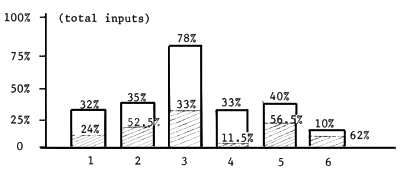
Fig. 1 Percentage of labour inputs in relation to total inputs and percentage of family labour1 in relation to total labour for combined or integrated production2
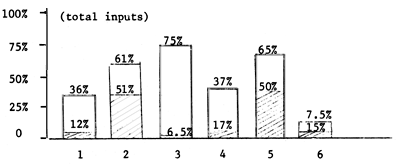
Fig. 2 Percentage of labour inputs in relation to total inputs and percentage of family labour in relation to total labour for non-fish culture operations only
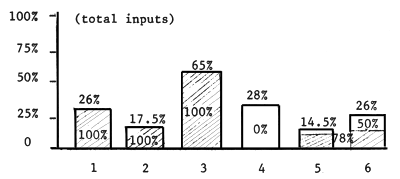
Fig. 3 Percentage of labour inputs in relation to total inputs and percentage of family labour in relation to total labour for fish culture operations only
When discussing labour inputs in relation to overall inputs, mendong-cum-fish production can be excluded because of the apparently different nature of this type of associated production as compared with all other combinations: the labour input is relatively small and family labour is of no importance. In all other types of production the family labour input is higher in the fish culture operation than in the associated activity. With fish-cum-mendong production it is the reverse. In most cases observed, fish-cum-mendong production was only one of the economic activities of the owner. This and the fact that mendong is produced entirely for the market as a primary product still to be processed, may explain the high percentage of wage labour, as the overall size of the family business requires much more than the family labour available.
The other three types of combination where fish culture is associated with crops are distinctly similar with respect to labour inputs. All labour consumed by the fish culture component was family labour, whereas for the crop component the percentage of family labour varied from 6.5 to 51 percent.
As for the overall percentage of labour inputs in relation to total inputs, labour accounted for between 32 to 40 percent, with the exception of genjer-cum-fish farming (78 percent) and fish-cum-chicken farming (10 percent).
To analyze the labour input further the absolute requirement for each type of production is expressed as follows:

Fig. 4 Absolute labour requirements per unit (man/day/year)
Comparing Fig. 4 with the related data presented in Fig. 1, it becomes apparent that fish-cum-chicken farming, although using only 10 percent of the total inputs as labour, still provides the most employment (78 man/days/year/100 m3). Genjer-cum-fish farming, on the other hand, which uses 78 percent of all inputs as labour, creates only 17 man/days/year/unit, while rice-cum-fish culture, the most widely practised type of integrated farming, provides only 10 man/days employment per unit per year. As the last aspect of the production factor, labour, in combined or integrated production, we shall look at how much net return, which is equivalent to potential cash family income1, was produced per unit of labour in the different types of operations. Fig. 5 presents a comparison of the processed data in this regard.
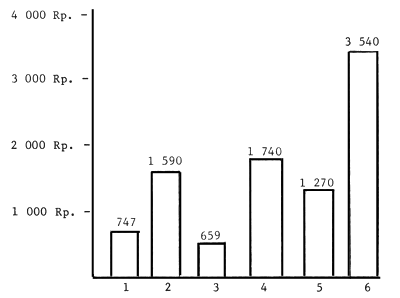
Fig. 5 Net income per man/day labour input per unit per year1
Figs. 4 and 5 show that fish-cum-chicken farming provide the highest net return per unit of labour. Genjer-cum-fish and rice-cum-fish production show the lowest per effort returns, which may be partly a result of the high overall percentage of wage labour in the farm operations.
The ratio between external and internal sources used in the different types of integrated production will illustrate the degree to which the operation is self-sufficient. External sources (seeds, feeds, fertilizer, wage labour, etc.) are in most cases obtained from the market via monetary exchange, whereas internal sources (by-products used as feeds/fertilizers, family labour, etc.) are provided without cash payments. In order to compare internal with external resources, they are costed according to their market value.
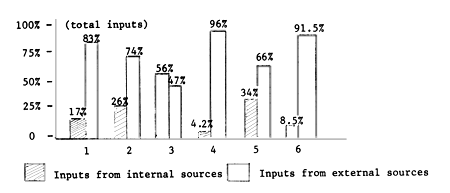
Fig. 6 Inputs from internal and external sources used in the different types of integrated production
With the exception of genjer-cum-fish in all types of combined/integrated production, more external than internal sources were used. Except in the case of mendong-cum-fish production (reason given in 5.1), we can observe an increased use of internal sources in small-scale family operations as genjer-cum-fish and kangkung-cum-fish (56 and 26 percent), whereas in rice-cum-fish culture only 17 percent of the inputs were from internal sources. Fish-cum-duck farming uses a higher percentage of internal resources than fish-cum-chicken farming, mainly because of the higher feed inputs in the latter.
The average net return will, for the different types of operations, indicate the magnitude of family incomes generated. Related to the necessary inputs the profitability of combined/integrated production can be judged. The following figure will give inputs-outputs and net return (income) in absolute terms for a 100 m2 unit for each type of integrated/combined production (1 = only fish, 2 = only the associated product, 3 = combined/integrated production).
Among the fish-cum-crop production systems, kangkung-cum-fish production creates most income, but also requires most inputs, while genjer-cum-fish farming produces the highest return compared to the magnitude of inputs.
Fish culture combined with poultry raising yields higher family incomes but requires also higher inputs. The necessity of purchasing feed can be expected to be the major constraint to the wider application of this highly profitable type of production in West Java.
Fig. 7 Costs and gross incomes/net incomes generated by the different types of integrated production
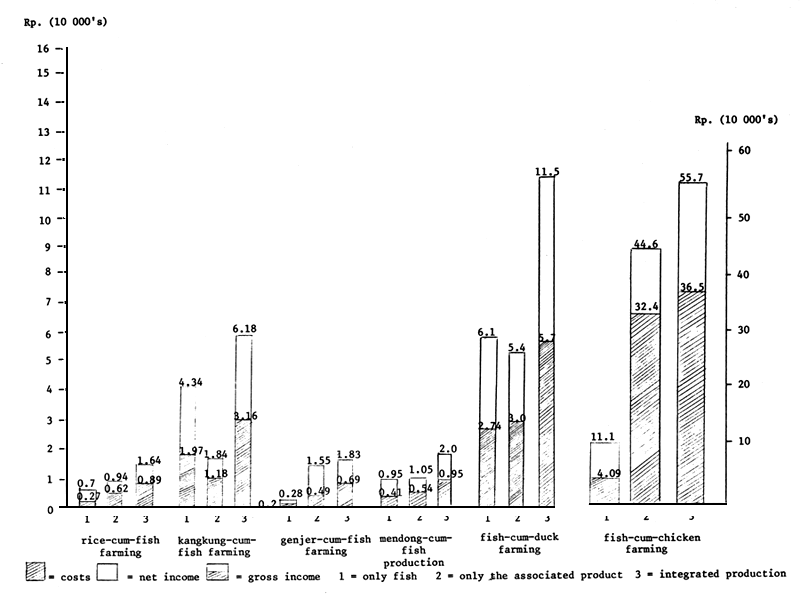
Seasonality of family income is one of the principal reasons why so many rural families in West Java are nearly always in debt. The continuity of incomes generated through different types of combined/integrated production has to be considered one of the crucial criteria in judging their social and economic efficiency.
From the six different groups of combined/integrated production, three groups can be made which generate family incomes of differing continuity:
rice-cum-fish farming and mendong-cum-fish production create two or three income peaks during the year (two more for fish grown in paddy fields in between growing seasons). The family income flow is not continuous.
In kangkung-cum-fish and genjer-cum-fish production, the vegetable can be harvested throughout the year, approximately every ten days, producing a relatively continuous inflow of cash, plus three to five income peaks through the harvesting of fish. Income flow is at medium to high continuity.
In fish-cum-duck and fish-cum-chicken farming eggs can be collected daily. Three to five income peaks occur through the harvesting of fish. Income flow is highly continuous.
Agro-Economic Survey of Indonesia, 1972 Agricultural census in thirty-three villages located in the major rice-producing areas of Indonesia. Res.Notes Agro-Econ.Survey, Bogor,(6)
Collier, W.L., n.d. Agricultural Evolution in Java: the decline of shared poverty and evolution. 38 p. (mimeo)
Collier, W.L. and Soentoro, 1978 Rural development and the decline of traditional village welfare institutions in Java. Paper presented at the Western Economic Association in 1978. Conference in Honolulu, June 1978, 57 p. (mimeo)
Djajadiredja, R. and Z. Jangkaru, 1978 Small-scale fish/crop/livestock/home industry integration: a preliminary study in West Java, Indonesia. Bogor, Indonesia, Inland Fisheries Research Institute
Indonesia, 1978 Central Bureau of Statistics, Annual statistics, 1977/78. Jakarta, Central Bureau of Statistics (unpublished)
Indonesia, 1978a Statistical Yearbook of Indonesia. Jakarta, Central Bureau of Statistics
Indonesia, 1977 Direktorat Jendral Perikanan, Departemen Pertanian Statistik perikanan. Fisheries statistics of Indonesia, 1975. Fish.Stat.Indones., (5):118 p.
Indonesia, 1978 Survey Sosial Ekonomi Nazional (National Socio-Economic Survey), Survey sosial ekonomi nazional tahap ke-lima (September-December 1976). Jakarta, Biro Pusat Statistik, VUS 78-26:131 p.
Sinaga, R.S. et al., 1977 Rural institutions serving small farmers and labourers: a case study in the village of Sukagalih, Garut Regency, West Java
Anon., 1975 Fisheries development in Indonesia. Rural Dynam.Ser., Bogor, (1):46 p. (mimeo)